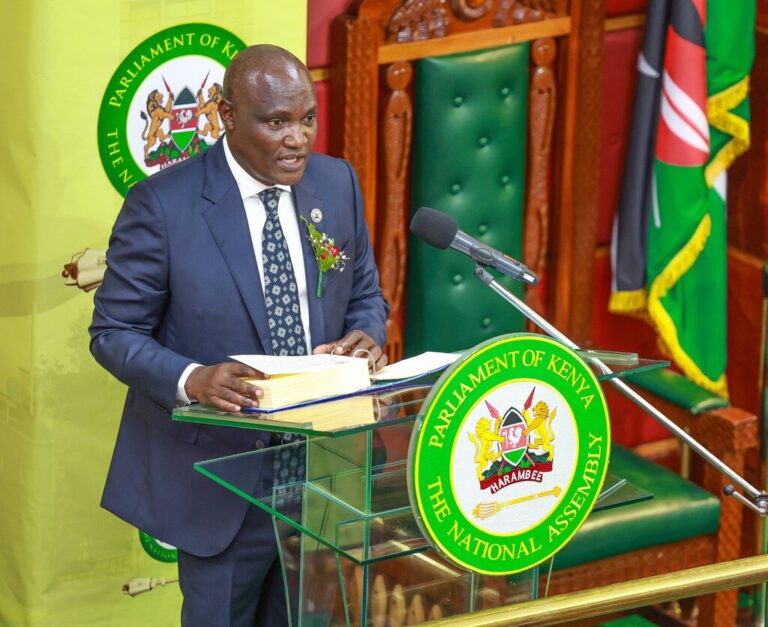Kenya is on a trajectory of sustained economic growth but faces significant risks from global trade sanctions, market volatility, and extreme weather conditions, Finance Minister John Mbadi said on Thursday.
Presenting the 2025/26 budget to parliament, Mbadi underscored that “heightened uncertainty due to recent tariff wars and the intensification of geopolitical tensions continue to pose significant risks to global economies.”
Growth Outpaces Global and Regional Peers
Kenya’s economy is projected to record an average growth rate of 5.2% in 2023 and 2024, outstripping the global average of 3.3% and sub-Saharan Africa’s 3.8% over the same period.
Mbadi attributed this momentum to a “stable macroeconomic environment over the medium term,” highlighting that key indicators such as inflation and the exchange rate have rebounded and are expected to remain stable.
Fiscal Consolidation and Revenue Strategy
The 2025/26 fiscal deficit is forecast at 4.8% of GDP (Ksh 923.2 billion), down from an estimated 5.7% (Ksh 997.5 billion) in 2024/25.
Total expenditure is projected at Ksh 4,291.9 billion, or 22.3% of GDP.
The deficit will be financed through net external borrowing of Ksh 287.7 billion (1.5% of GDP) and net domestic borrowing of Ksh 635.5 billion (3.3% of GDP).
The budget aims to boost revenues for debt servicing without imposing new tax measures that previously sparked deadly protests.
Instead, the government plans to “ease the tax burden on Kenyans by increasing the pool of taxpayers and enhancing tax compliance.” Mbadi acknowledged concerns over unrealistic revenue targets and said projections have been adjusted to align with economic trends.
“Revenue projections in the FY 2025/26 budget and over the medium term are consistent with the growth of the economy,” Mbadi stated.
Public Debt and Fiscal Discipline
Kenya’s total debt-to-GDP ratio remains high, at around two-thirds. In present value terms, the ratio is expected to decline from 63.0% in 2024 toward the government’s anchor of 55% (plus or minus 5%) by 2028.
The administration is seeking alternative funding sources after last year’s widespread protests forced austerity measures and the cancellation of planned tax hikes worth over Ksh 346 billion ($2.7 billion).
Mbadi emphasised, “Kenyans cannot bear more tax. For the first time, we have not added taxes in the current finance bill, as has been the case before.”
Indirect Taxes and Compliance Measures
Despite the pledge not to increase direct taxes, critics argue the government is raising indirect taxes and expanding the Kenya Revenue Authority’s (KRA) powers to monitor bank and mobile money transactions.
Mbadi defended these measures as necessary for effective tax collection.
The budget focuses on widening the tax base, improving compliance, and tightening expenditure control.
“Expanding the tax base and enhancing compliance, in line with the goals set out in the Medium-Term Revenue Strategy,” the statement reads, with additional emphasis on strengthening public spending efficiency.




